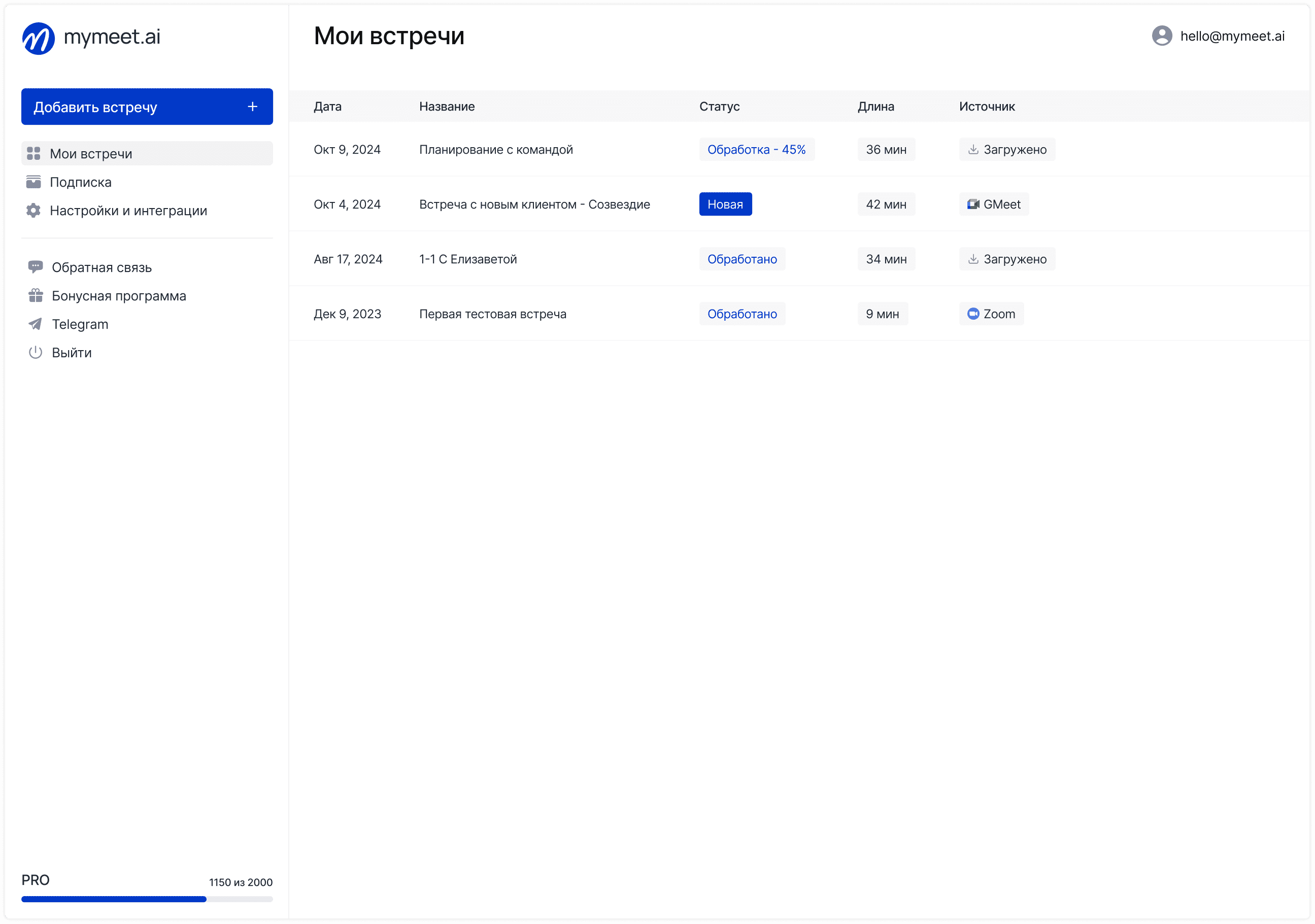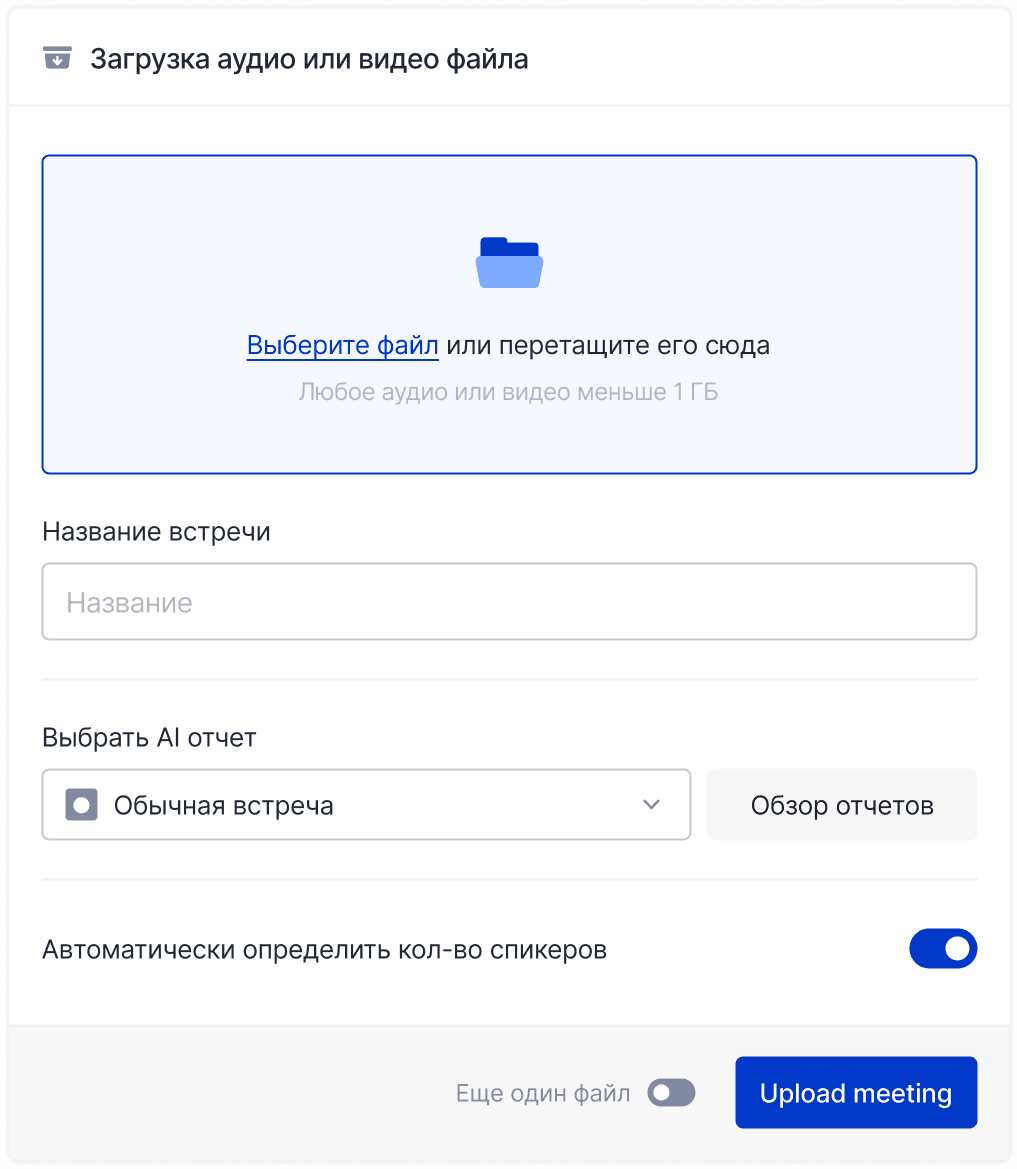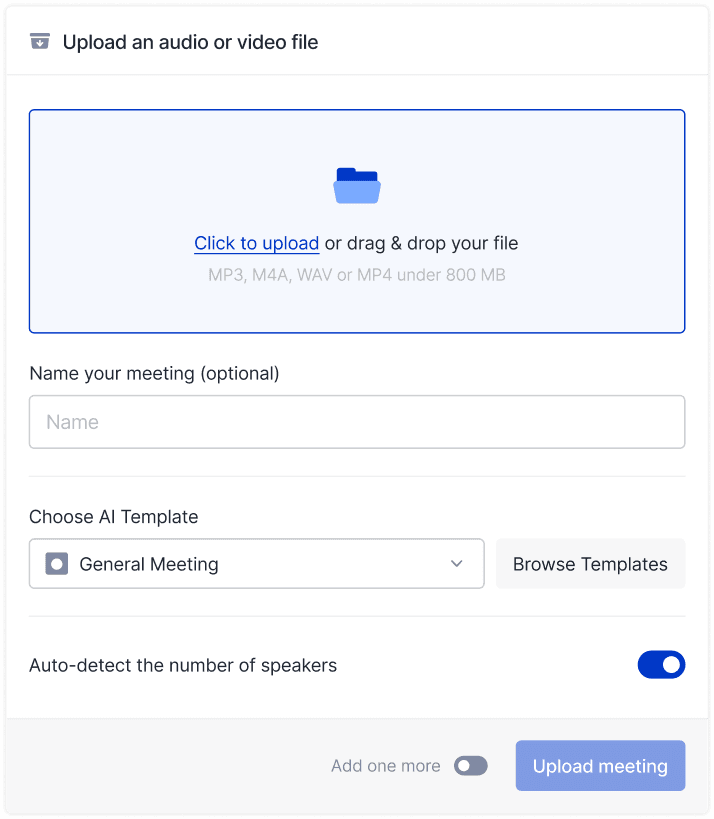Technology & AI

Andrey Shcherbina
Apr 16, 2025
Sometimes a product you create takes on a life of its own. We developed our AI chat as a simple tool for working with meeting recordings. But users quickly found applications we hadn't even imagined.
It started with individual emails. "Hey, I'm using your chat to analyze candidate interviews!" or "Our team has been writing specifications faster thanks to your tool." Then these stories multiplied.
I personally spoke with customers to understand how they're using the AI chat. I discovered many interesting cases and collected five of the most useful ones to share with you.

Case 1: Researchers: Accelerated Insight Discovery
Problem
UX researchers are overwhelmed with data. Interviews, focus groups, surveys — all of these generate mountains of text that need processing. Previously, this looked like: sitting, listening to recordings, writing down key points, trying to find patterns... And this would go on for hours just to extract something useful from a conversation.
Solution with AI Chat
The AI chat significantly accelerates data analysis from interviews. A researcher uploads a recording and directs the analysis with questions like:
"Highlight the main user problems when interacting with Feature X"
"Compile a list of all mentioned interface wishes"
"Create a table with mentioned problems and their importance to the user"
The system analyzes the transcript and presents results in a structured format.
Example of Use
Anna, a UX researcher at a product company, conducted an in-depth interview with a key user. Instead of traditional hours-long analysis, she applied the following approach:
First, she requested a general overview: "What main topics were discussed in the interview?" Then she delved into specific aspects: "What problems did the user mention when working with the statistics section?" She highlighted the emotional aspect: "Collect quotes where the user expressed frustration" She segmented the data: "Create a table with problems and their priority for the user"
The entire process took about 15 minutes instead of several hours.
Result
60-70% reduction in analysis time
Identification of non-obvious insights through deep interview analysis
Ability to test hypotheses in real-time
More consistent and objective conclusions
Case 2: Sales Managers: Maximum Information from Every Contact
Problem
Anyone who has worked in sales knows — a client might casually mention something that opens the door to a major deal. "By the way, we're also considering a solution for our branch office" — and suddenly you have a potential opportunity to double the contract. But try keeping track of everything in an hour-long conversation! Notebook, phone notes — still, half of the important details evaporate. And often the most valuable leads are hidden in these details.
Solution with AI Chat
AI chat acts as an assistant that captures every word from the client. After the meeting, the manager can ask targeted questions:
"Compile a list of all needs the client mentioned during the conversation"
"What objections did the client express regarding the cost?"
"Which competitors were mentioned and what specifically did the client say about them?"
This provides a complete picture of the client's needs and objections.
Example of Use
Mikhail, a key account manager, conducted an initial meeting with a potential customer. After an hour-long conversation, he used the AI chat as follows:
Structured the main requirements: "Create a table with the client's key product requirements" Identified problem areas: "What problems with the current solution did the client note?" Prepared for objections: "Highlight all doubts and objections from the client" Discovered additional opportunities: "Analyze what indirect indications of additional needs were mentioned in the conversation"
Based on the information received, Mikhail prepared a proposal that addressed both explicit and implicit client needs.
Result
Approximately 30% increase in proposal conversion
Shorter sales cycle due to better addressing client needs the first time
Improved after-sales service by preserving all details of initial agreements
More efficient handovers between managers
Case 3: HR Specialists: Objective Candidate Analysis
Problem
Every HR professional has caught themselves thinking: "I think I chose this candidate just because they made a good joke at the end of the interview." Our brains love cognitive biases. The "halo effect," "first impression effect" — fancy scientific terms that hide a simple truth: we often judge subjectively. After an hour-long conversation with a candidate, only a couple of bright moments remain in memory, which form the basis for decisions. Important signals about competencies or values get lost in the general flow of information.
Solution with AI Chat
AI chat provides an unbiased analysis of interviews. HR specialists can ask questions to assess specific competencies:
"How did the candidate respond to questions about teamwork?"
"Create a table with examples of problem-solving provided by the candidate"
"Compare answers about career goals with our growth opportunities"
This ensures a more structured evaluation.
Example of Use
Elena, an HR manager at a technology company, conducted an interview for a product analyst position. After the interview, she applied the following algorithm with the AI chat:
Compiled a basic profile: "Prepare a brief summary of the candidate based on the interview" Analyzed key competencies: "Evaluate how the candidate demonstrated analytical skills" Checked cultural fit: "What values and work principles did the candidate mention?" Detailed specific skills: "Create a table with examples of the candidate's experience with different analytical tools"
This approach allowed for decisions based on specific data rather than general impressions.
Result
25% reduction in incorrect hires
More objective and fair selection process
Ability to compare candidates in detail on specific parameters
Preservation of information for planning new employee development
Case 4: Project Managers: Clear Documentation of Agreements
Problem
"But we agreed that you would do this!" — a familiar phrase after team meetings? I've both heard and said this many times. A two-hour planning session ends, and a week later it turns out that half the team understood their tasks differently. Someone recorded the deadline as the 15th, someone else as the 25th. One person thinks they're only responsible for the button design, another is waiting for them to deliver a complete page layout. All of this could have been avoided with proper documentation... But who wants to spend another hour compiling a detailed protocol after an exhausting call?
Solution with AI Chat
AI chat allows you to quickly extract and structure all agreements:
"Make a list of all tasks agreed upon at the meeting, indicating responsible persons and deadlines"
"What project risks were discussed and what decisions were made?"
"Create a table with project stages, deadlines, and completion criteria"
This ensures a unified understanding of tasks among all participants.
Example of Use
Dmitry, a project manager launching a new product, held a three-hour planning session with a team of 12 people. Instead of manually creating a protocol, he used the AI chat as follows:
Formed a work plan: "Create a project roadmap with stages, deadlines, and responsible parties" Identified risk areas: "Highlight all mentioned risks and mitigation measures" Documented disputed points: "On what issues were there disagreements in the team and what decisions were made?" Prepared communication: "Draft a brief meeting report to send to the team"
Dmitry sent the structured plan to all participants within an hour after the meeting.
Result
80% reduction in time spent on meeting documentation
Minimized misunderstandings within the team
Improved execution discipline due to clear agreements
Ability to quickly resolve disputes by referring to exact wording
Case 5: Development Teams: Precise Requirement Definition
Problem
There's a classic situation in development. A meeting is held, requirements are discussed, everyone nods — seemingly in agreement. Time passes, the team shows the result, and then it starts: "That's not what we meant." Why? Technical discussions are full of non-specific terms. What does "user-friendly interface" mean? Or "acceptable loading speed"? These could mean completely different things to the client and the developer. The outcome is predictable — rework, deadline shifts, additional meetings. And so it goes in circles, while the product gradually loses its original concept.
Solution with AI Chat
AI chat helps to precisely extract technical requirements from discussions:
"Compile a list of all functional requirements mentioned at the meeting"
"Create a table with technical constraints and their priorities"
"What integrations were requested and what details were discussed about them?"
This gives developers a clear understanding of the required functionality.
Example of Use
Alexey, a technical lead of the development team, participated in a meeting with the product manager and business representatives. After the meeting, he applied the AI chat:
Identified requirements: "Create a list of all technical requirements for the new feature" Determined priorities: "Create a priority matrix for requirements based on the discussion" Identified complexities: "What technical limitations were mentioned during the discussion?" Prepared questions: "On which technical aspects is additional information required?"
This allowed the team to start work with the correct understanding of the task right away.
Result
35% reduction in development iterations
Reduced number of clarification meetings
More accurate resource and timeline planning
Improved final product quality through better alignment with expectations
Types of Queries That Solve Different Tasks
Before moving on to specific scenarios, it's worth mentioning that AI chat queries can be divided into three large groups:
General Meeting Analysis
Queries to identify key information from the entire discussion:
Obtaining meeting summaries and key decisions
Extracting task lists with responsible parties and deadlines
Identifying unresolved issues and problem areas
Forming action plans and project roadmaps
Participant Speech Analysis
Queries for detailed examination of individual presentations:
Highlighting key points from specific speakers
Comparing positions of different participants on a single issue
Tracking changes in participants' opinions during the discussion
Analyzing argumentation and evidence presented in support of positions
Material Preparation
Queries for creating ready-made documents:
Forming follow-up emails and reports
Creating structured tables for task tracking
Developing presentations based on meeting results
Preparing question lists for subsequent discussions
Each specialist, depending on their role, emphasizes different types of queries. For example, project managers more often use general meeting analysis and material preparation, while HR specialists and sales managers actively apply participant speech analysis. Let's look at how this works in practice.
Find Your Own Way to Work with AI Chat
The stories I've shared above are just the beginning. Every day our users find new ways to apply the AI chat. Some use it to create weekly reports, others to analyze customer feedback.
The main thing is not to be afraid to experiment. Try different questions, change wording, combine queries. Over time, you'll find exactly the phrases that work best for your tasks.
My advice is to first repeat the examples from the article, and then start adapting them to your processes. Sometimes a small change in the question is enough to get a much more useful result.
Start Using AI Chat Right Now
AI chat is available to all mymeet.ai users:
On Free and Lite plans, you can ask 10 introductory queries (non-renewable)
On Pro and Ultra plans, AI chat functionality is available without limitations
No additional settings needed — upload a meeting recording, wait for the transcript to be created, and go to the "AI Chat" tab.
Three steps to get started:
Log in to your mymeet.ai account or register for free
Upload a meeting recording or open one that's already been processed
Go to the "AI Chat" tab and ask your first question
Andrey Shcherbina
Apr 16, 2025








